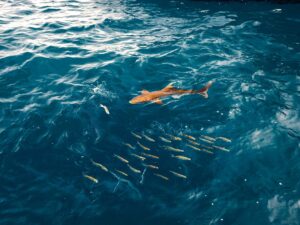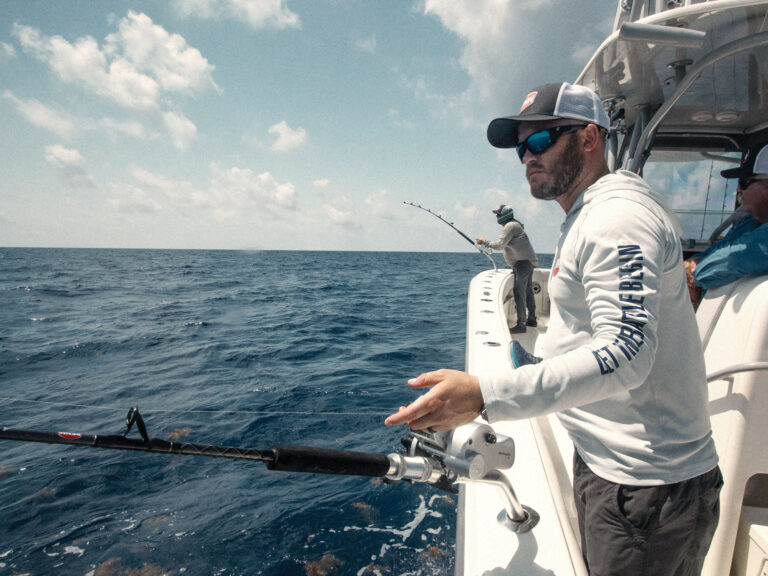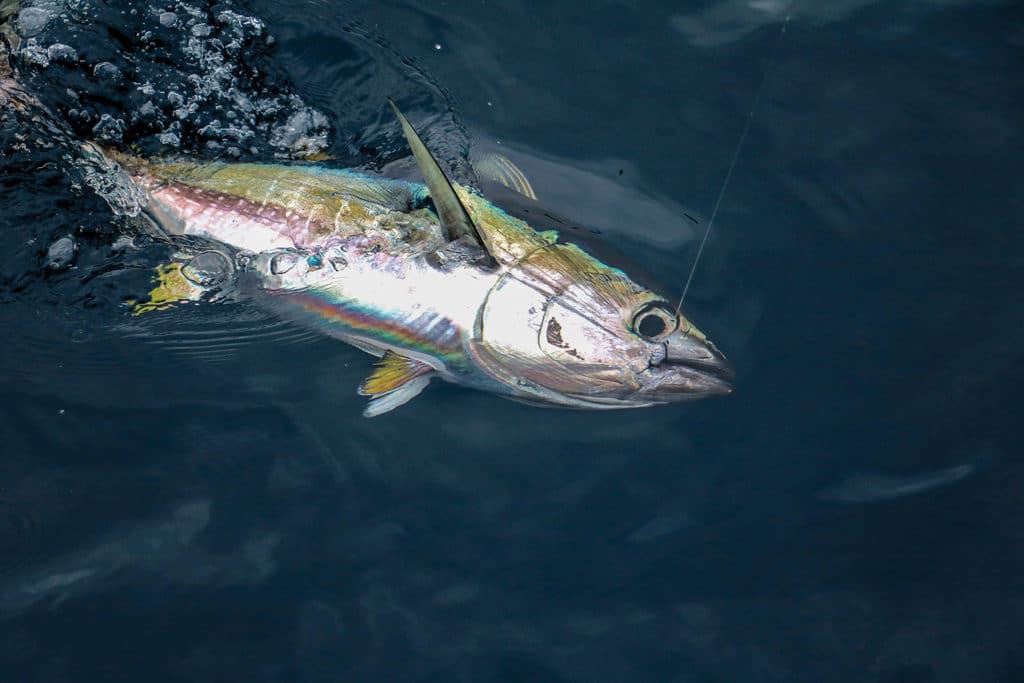
Ninety miles from port and running out of hope, my fishing buddy, John Gaebel, and I were struggling to find a tuna bite. Then, just as we prepared to tack for home, a strike on the starboard line gave us reason for optimism. As we boated the fish, Gaebel glanced at the sea-surface-temperature gauge and informed me that the water had warmed by nearly 2 degrees in a very short distance.
We had found an offshore temperature break, and it was holding fish. On nearly every subsequent trolling pass, we hooked a tuna, and we had our fill within an hour. The long offshore run had proved immensely successful, due largely to having a high-end sea-surface-temperature gauge, and paying close attention to it.
Underutilized
Sea-surface-temperature instrumentation might be the most underutilized aspect of marine electronics on a fishing boat. Yet anglers in the know frequently turn a ho-hum trip into an oh-wow day with the data supplied by temperature readouts.
“Serious offshore anglers know that a temp gauge is an important tool,” says Scott Heffernan, vice president of the GPS Store, a national marine electronics retailer. “They’re constantly looking for even the smallest temperature break.”
Special features on some SST displays allow anglers to maximize instrument effectiveness by setting alarms that sound the alert if there’s even a subtle change in temperature. Others use arrows or plot graphics to indicate temperature trends.
Truly Dedicated
There are two basic types of SST instruments: 1) Dedicated gauges and 2) readouts integrated into a multifunction display. One of the most popular choices in dedicated gauges is the Si-Tex SST-110, which is available with a transom-mount or through-hull sensor. It can also connect to the cables and plugs for previously installed sensors for the once-popular, but now-discontinued, Dytek digital temperature gauge.
The backlit 4.3-inch-square display of the SST-110 features large numerals that are easy to read at a glance. It can be programmed to sound an alarm when the sea temp goes up or down by a user-determined amount. Uniquely, it reads down to a 100th of a degree, while most others gauges and displays read to a 10th of a degree.
“Commercial-fishing boats rely on dedicated temp gauges like the SST-110 to make a living,” Heffernan says. “Displays are usually mounted in a location visible throughout the cockpit. Trend arrows on the readout make it easy to see if the water’s getting warmer or cooler, and audible alarms ensure a constant level of awareness.”
MFD Magic
There’s a downside to a dedicated display. It occupies valuable real estate at the helm, space that some boats might not have available. That’s why many anglers rely on an SST readout on MFDs from brands such as Furuno, Garmin, Humminbird, Lowrance, Raymarine or Simrad.
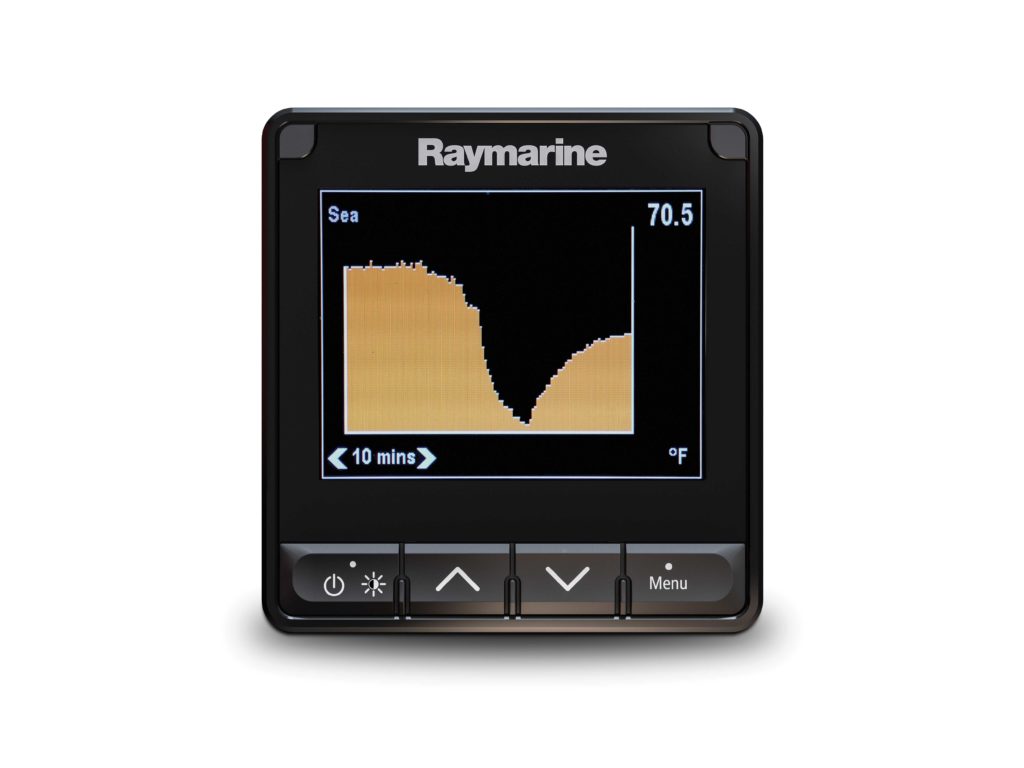
“The built-in readouts on MFDs provide offshore anglers with all the information needed to find fish-holding breaks,” Heffernan points out. “The downside is that you’re already using these screens for so much other information. When you have a dedicated temp gauge front and center on your dash, you’re more likely to keep an eye on it.”
SST data on many MFDs is fed by a sensor integrated into the transducer. For instance, Airmar’s popular B175HW through-hull tilt-element transducer is available with a built-in SST sensor. The transducer cable and connector carry the SST data to the MFD, so there’s no need for separate wiring or cabling, and the readout can be shared across the NMEA 2000 with compatible MFDs and gauges.
Single Sensor
Skippers who prefer a dedicated SST sensor for their MFDs opt for models such as Airmar’s HT200, a through-hull flush-mount sensor that connects to an MFD’s NMEA 2000 network. According to Airmar, the HT200 features a bronze sensor surface larger than that of sensors integrated into sonar transducers for greater precision and quicker response to changes in temperature. The SST data can be shared to other displays on the network.
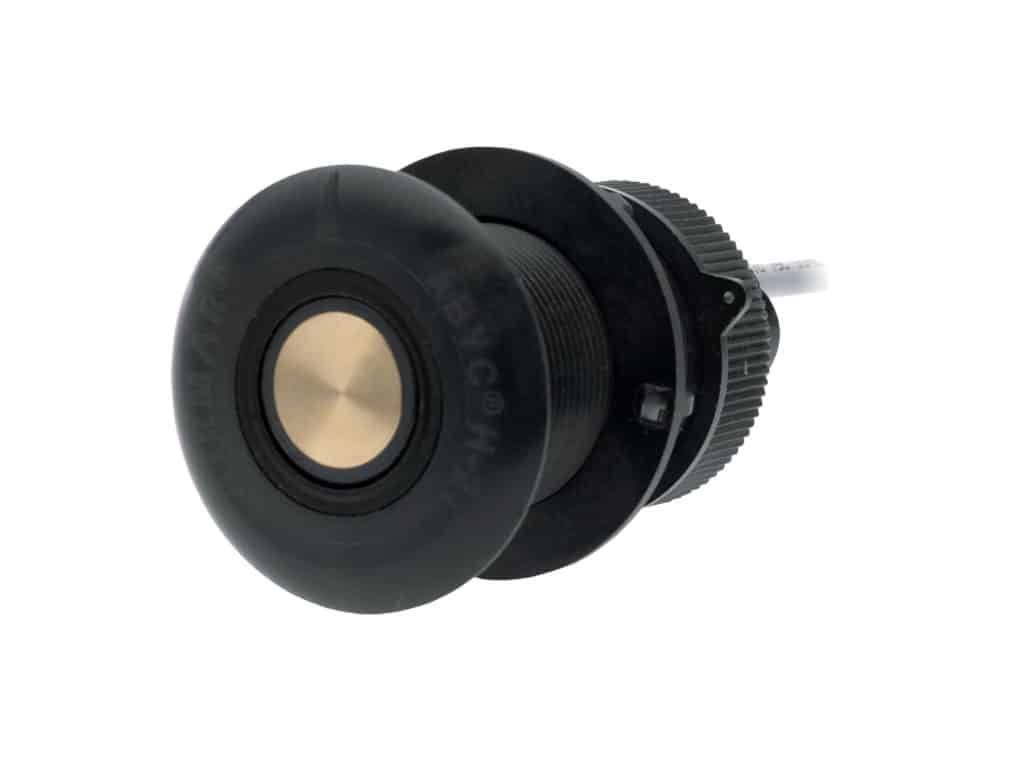
Many MFDs show water SST trends in an onscreen graphic. On the Lowrance HDS Live MFDs, a colored line and digits are shown at the top of the sonar screen when you toggle on the temperature graph in the menu. This graph illustrates sudden changes in SST—such as an offshore temp break—that might go unnoticed by looking at numbers alone.
Accuracy Issues
An SST sensor will likely be accurate out of the box, but the resistance-temperature detector (basically a spring) inside the sensor might degrade over time. So it pays to periodically check the accuracy of your SST readout against a known source, such as a pool thermometer. Lower the thermometer on a cord from the side of the boat to the same depth as the sensor, leave it in for a few minutes, then pull it back up and compare the readings.
If the SST on your boat instrumentation is significantly different, you can usually adjust the temperature a few degrees using the calibration function in your gauge or MFD. Each brand uses a slightly different method within the user interface, so check your owner’s manual to find the process for your machine.
Well-Worn
Since the sensor is working all the time (even when your electronics are turned off), it can wear out completely after years of use. This can happen in stand-alone sensors, as well as those integrated into a transducer, and might result in a widely inaccurate reading (that cannot be adjusted via calibration) or no reading at all.
Read Next: Using Sea-Surface-Temperature Instruments
In this case, sensor replacement is the answer, but Airmar’s HT200 makes this process easier. The through-hull housing lets you easily remove and replace the sensor from inside the boat. You don’t have to haul the boat either; a valve in the housing prevents water from gushing in.
Plane Truth
What is the best location for an SST sensor on a saltwater-fishing boat? A through-hull installation (be it a stand-alone sensor or one built into the transducer) represents the best choice because the sensor is completely submerged most of the time, resulting in the most accurate sample of the SST. A transom-mount, on the other hand, is submerged only when a boat is not on plane. When a boat planes, a transom-mounted sensor is lifted clear of the surface, so it might be reading the air temp instead of the SST.
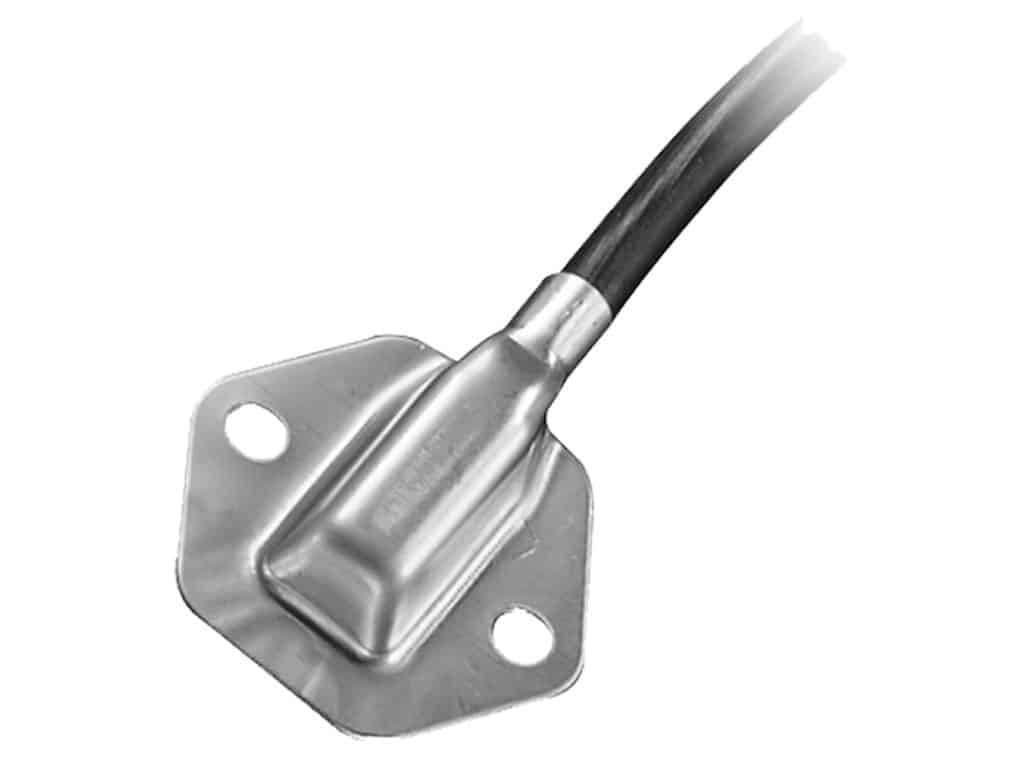
That said, some cored boats might be ill-suited for through-hull installations, or the owner might be averse to cutting a hole though the bottom of the boat. In such cases, a transom-mount sensor is better than no sensor at all, and it may well pay off with a boatload of tuna on your next offshore fishing trip.
New Electronics
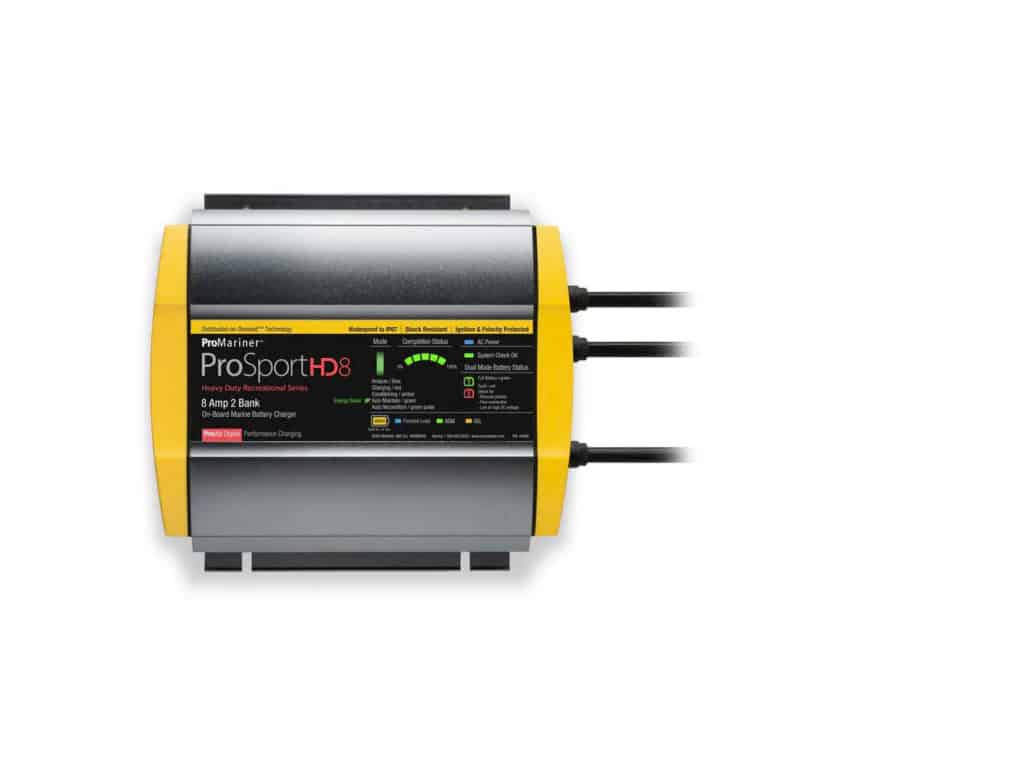
The ProSportHD, one of five new battery chargers from Pro Mariner, features fully automatic multistage charging and a tri-surface heat-sink design to enhance battery performance and longevity. You can choose charging profiles for flooded-cell, AGM or gel batteries, and LEDs show charging status. Distributed-On-Demand technology directs power to the battery most in need. $139.99 for the ProSportHD 8; promariner.com
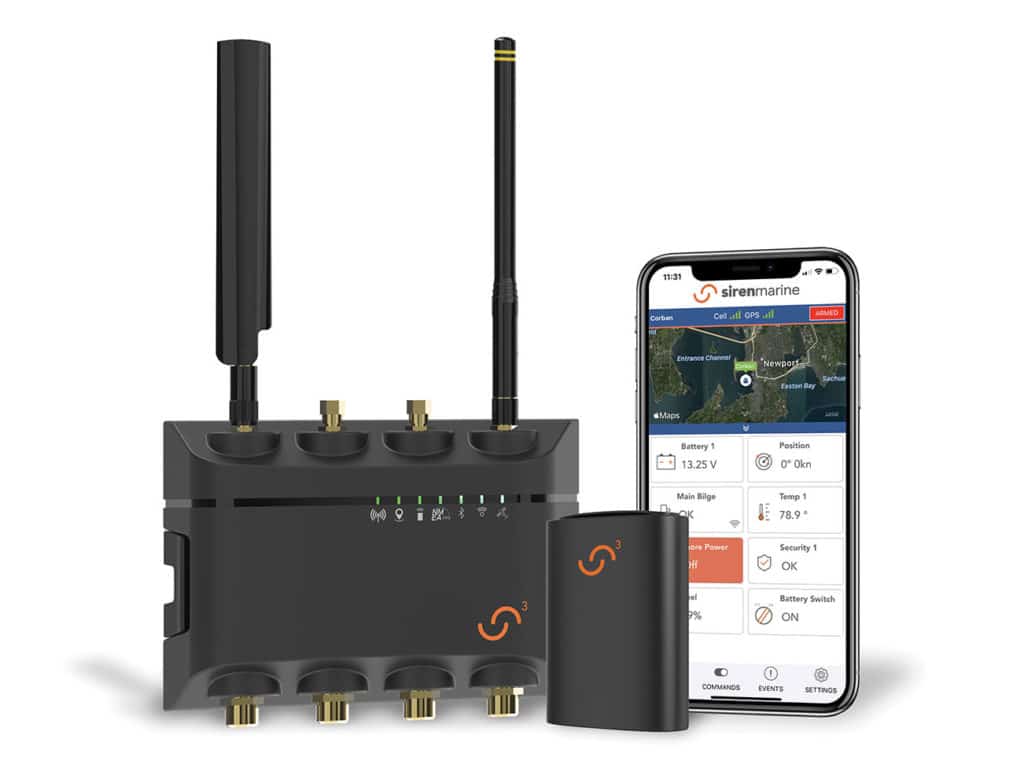
The Siren 3 Pro features links with the Siren Marine app for vessel monitoring and control from a mobile device. It features GPS tracking and LTE cellular connectivity, and works with a range of advanced wireless and wired sensors to monitor boat security and onboard systems. NMEA 2000 connectivity allows for remote control of systems via digital switching from brands such as CZone. $749, plus $15 per month cellular service fee; sirenmarine.com
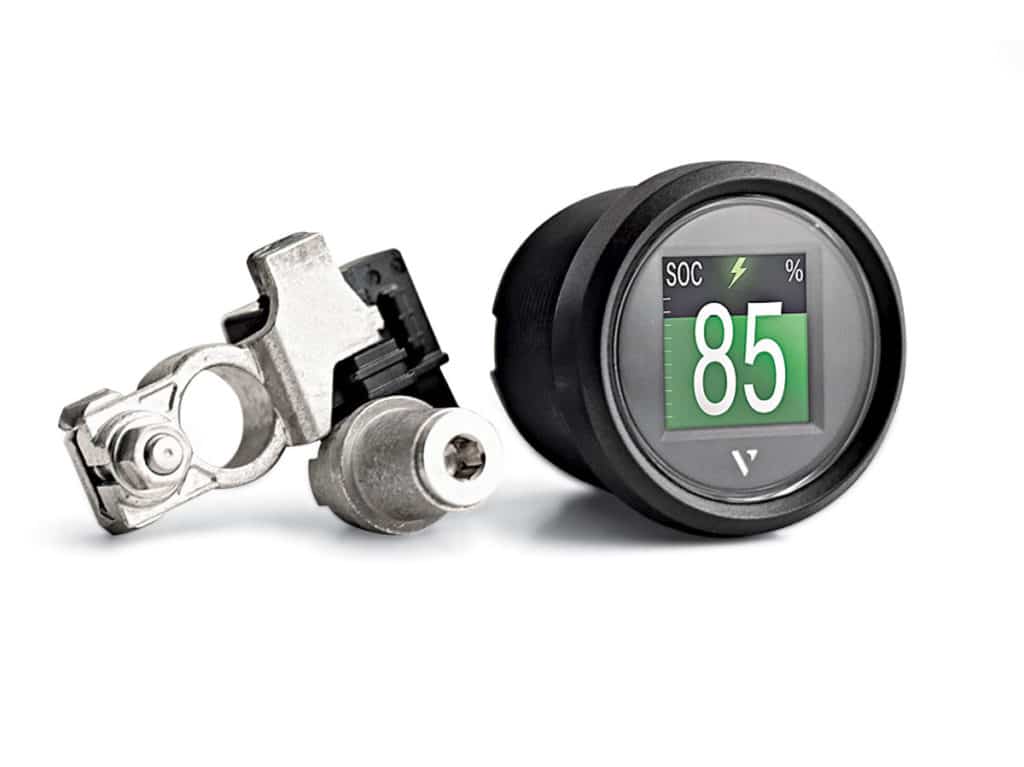
Veratron’s VL Flex battery monitors voltage, current, and percentage of remaining capacity for 12- and 24-volt marine DC systems, and works with flooded-cell, AGM and gel batteries. A remote button lets you scroll through functions, and the device is configured with Veratron’s mobile app. The round gauge measures 1.44 inches in diameter, and nine bezels are available to match any dashboard decor. Starting at $229.99; veratron.com




